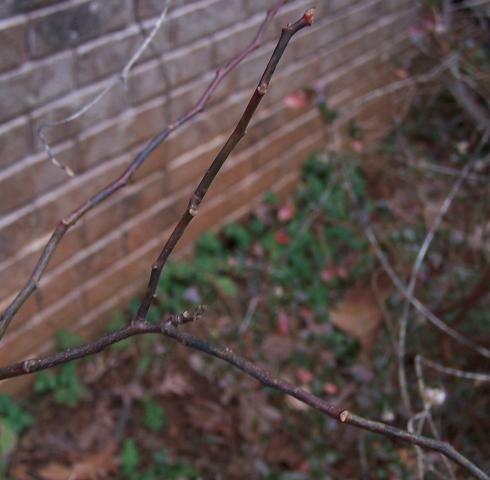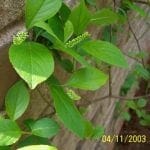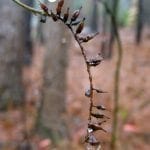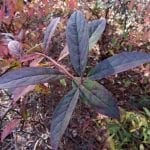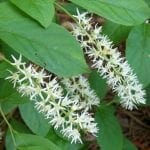- Flower buds
- Seed capsule
- Fall color
- Flowers
Scientific Name:
Itea virginica
Common Name:
Virginia Sweetspire
Scientific Name Pronounciation:
eye-TEE-uh vir-JIN-ih-kuh
Plant Type:
Shrub
Plant Hardiness Zones:
5-9
Plant Hardiness Zone(s):
Usual Size:
3-6 ft. H X 4-6 ft. W
Flower:
Small, white, lightly fragrant flowers are borne in a bottle-brush arrangement on the ends of the branches.
Bloom Time Notes:
Late spring
Leaf:
Elliptical, dark green, shiny, finely toothed, pointed on the end.
Fruit:
A capsule
Wildlife:
The numerous flowers support pollinators.
Natural Habitat:
Grows naturally in swamps and along the edges of streams and ponds and is tolerant of flooding.
Propagation:
When dormant the plant can be divided by removing suckers with roots; also propagated by softwood cuttings and seed collected after the seedheads have dried.
Bloom Time:
Sun or Shade:
Companion Plants:
Cultural Notes:
Virginia Sweetspire (Itea virginica) is best grown in full sun to partial shade in moist, loamy soil; even though found in wet places naturally, it adapts well to normal garden conditions; best planted in masses or allowed to colonize naturally; suckers easily so should be planted where that will not be a problem or where suckers can be easily controlled; avoid fertilizing unless absolutely necessary as it will cause excessive suckering.
The early summer blooms are showy and attract butterflies; when winters are mild, it can be semi-evergreen to evergreen, but if the weather turns cold it has excellent fall color; several named varieties are available in the nursery trade and this plant is used in professional landscapes quite a bit.
Other Common Names: Virginia Willow

